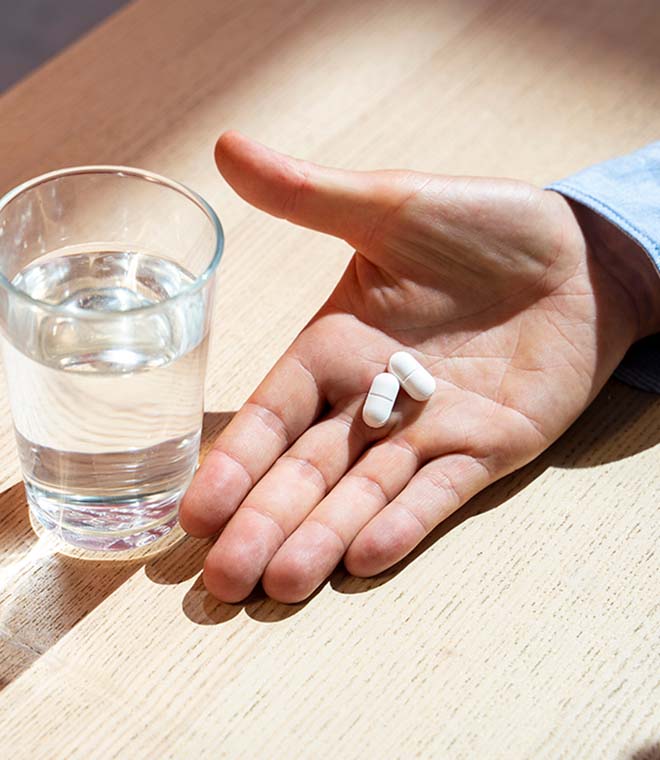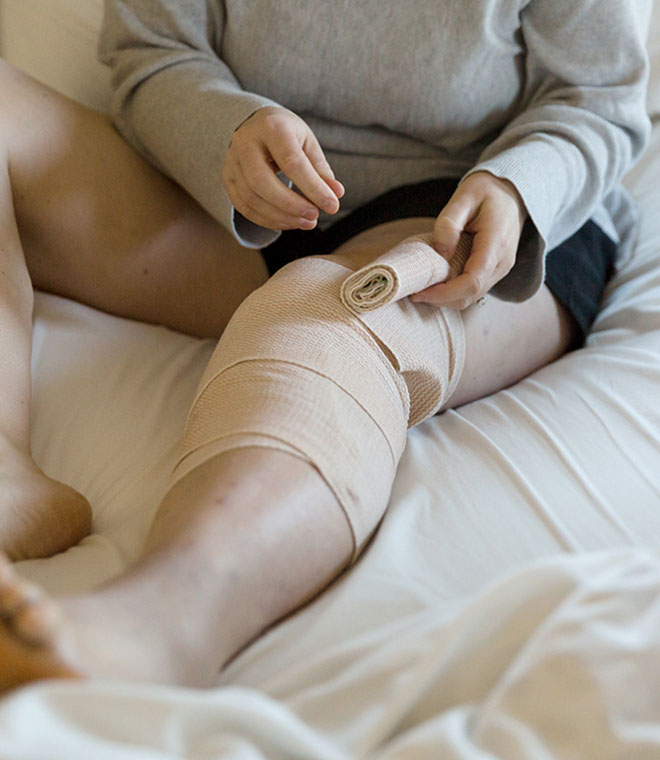Health
What is plantar fasciitis?
By Jean Cherry, RN, MBA Jun 24, 2022 • 4 min
Do you have sharp stabbing pain under the heel of your foot?
Is the pain worse in the morning with your first couple of steps? Do you have heel pain after sitting or standing for a long time? Do you get heel pain after wearing shoes with thin soles? Are you a runner with tight calf muscles who experiences heel pain after a run?
If you answered "yes" to any of these questions, you may be suffering from plantar fasciitis (PF). It happens when the long, thin ligament (called the plantar fascia) connecting your heel to your toes becomes irritated and inflamed. Approximately 1 in 10 people will develop plantar fasciitis in their lifetime, and about 2 million people are treated for this condition each year. It's most common in people between 40 and 60 years of age, but it's also common in younger runners.
What causes plantar fasciitis?
Plantar fasciitis occurs when the plantar fascia supporting the arch of the foot becomes damaged by high stress, strain, repetitive stretching or tearing. The risks for developing plantar fasciitis include obesity, running or walking too much, and having high arches of the feet, flat feet or tight muscles in your heels and calves. Ill-fitting shoes or shoes that lack support may also cause heel pain.
How is plantar fasciitis diagnosed?
A doctor will examine your foot to determine where the pain is located. They'll also check for tenderness by pressing on the plantar fascia as you flex your foot. They will assess if you have limited ankle motion. Plantar fasciitis usually affects one foot, but in 30% of cases, it affects both feet. X-rays, bone scans or magnetic resonance imaging (MRI) tests are generally not needed for diagnosis unless the doctor is trying to rule out another problem, such as a stress fracture or pinched nerve.
What is the treatment for plantar fasciitis?
There are several conservative, nonsurgical treatment options that can take place at home initially. Nine in 10 people will see improvement within two to three months, but it may take up to 10 months.
- Rest or decrease athletic activities that cause feet to pound against hard surfaces and make pain worse, such as running or step aerobics.
- Ice your foot for 20 minutes, three to four times a day. You can roll your foot over a cold or frozen water bottle.
- Take nonsteroidal anti-inflammatory medications, such as ibuprofen (Advil) or naproxen (Aleve) to reduce pain and inflammation. Consult with a doctor if you take these medications longer than two to three weeks.
- Stretch tight muscles in your calf and foot. This is an effective way to decrease heel pain.
Foot exercises for plantar fasciitis
There are several plantar fasciitis stretches you can do focusing on your foot. First, an exercise for plantar fasciitis heel pain is performed in the sitting position with your affected foot over the knee of your other leg. Hold the toes of your affected foot, pulling them gently toward you while using the other hand to gently push on the plantar fascia in the middle of your foot for 10 seconds, repeating 20 times with each foot. Do stretching exercises for plantar fasciitis in the morning before rising out of bed. Use a strap or towel to extend your reach if it is hard for you to reach your toes.
Another way to stretch the plantar fascia is to sit with both legs in front of you with a towel wrapped around the ball of the affected foot. Gently pull the towel toward you and hold for 15–30 seconds while sitting up tall and keeping legs straight.
Stretch your calf muscles by leaning forward against a wall, one leg in front of the other. Straighten the heel of the back leg into the floor and hold for 15–30 seconds.
A physical therapist can also teach you a series of plantar fasciitis physical therapy exercises that stretch the plantar fascia and Achilles tendon, in addition to exercises that strengthen lower leg muscles. The exercises, along with athletic taping in some cases, will support and stabilize your ankle and heel. Your physical therapist or doctor may also recommend a splint to wear at night that stretches your calf and the arch of your foot. Or they may suggest arch supports, either over-the-counter or custom-made, to more evenly distribute pressure on the bottom of your feet.
Medical treatments options
If treatments at home are not working or the pain is not responding to nonsteroidal anti-inflammatory medications, your doctor may recommend a corticosteroid injection. Steroids are injected into tender areas of the inner or medial side of the heel and can relieve heel pain for several days, continuing for weeks to months. Steroid injections are not a cure, and multiple injections are not recommended. Complications can include a weakening of the plantar fascia, heel pad atrophy and possible rupture.
Your doctor may suggest extracorporeal shock wave therapy (ESWT). This procedure directs sound waves into the heel to stimulate healing. By shocking the plantar fascia, ESWT stuns your nerves, which decreases pain, increases blood flow to the foot and promotes tissue healing. Side effects can include bruising, pain, swelling, tingling or numbness. ESWT has unproven effectiveness and should not be used for first-line care.
Approximately 2% to 5% of people who have not found relief after six to 12 months of nonoperative therapy undergo a surgical procedure to release the plantar fascia from the heel bone and the first branch of the lateral plantar nerve. Side effects can include weakening of the arch in your foot, incomplete pain relief and nerve damage. Surgery is usually a last-line therapy. A large study found that 70% of people showed improvement after surgery, but only 50% experienced complete satisfaction. Post-operatively, you may develop other foot problems, such as hammer toes, requiring lifelong orthotics.
How can I prevent plantar fasciitis?
There are a few preventive measures you can take to decrease your risk of developing plantar fasciitis. These include maintaining a healthy weight, wearing supportive shoes, trying low-impact sports, such as biking or swimming, and completing warmup exercises and stretching prior to workouts and avoiding hard floors.
Updated August 2021.



